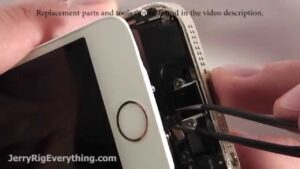Is your charger mysteriously turning blue? Don’t worry, you’re not alone. The phenomenon of chargers changing color can be puzzling and even a bit alarming. But fear not, we’ve got the answer to the burning question on your mind: why is my charger turning blue? In this article, we’ll delve into the possible causes and provide you with a simple solution to this perplexing issue. So, let’s jump right in and unravel the mystery behind your charger’s vibrant new hue.
Why Is My Charger Turning Blue?
Have you ever plugged in your charger only to find that the charging port or the charger itself has turned an unexpected shade of blue? It can be quite puzzling to see such a change in color, especially if you’re unsure of what it means or if it indicates a problem. In this article, we will explore the reasons behind why your charger might be turning blue and what steps you can take to address the situation.
Understanding the Blue Color
Before we dive into the possible reasons for your charger turning blue, let’s first understand why this color change occurs. In most cases, a blue hue is a result of a chemical reaction, oxidation, or overheating of certain components within the charger or the charging port. While some color variations are harmless, others may suggest a potential issue that requires attention.
Possible Reasons for a Blue Charger
There can be several reasons why your charger is turning blue. Let’s explore some of the common causes:
1. Oxidation and Corrosion
Oxidation and corrosion can cause the metal components in your charger to turn blue. This can happen due to exposure to moisture, humidity, or even air. If your charger has been in contact with water or if it’s been exposed to a humid environment, it’s possible that the metal parts have oxidized, leading to the blue coloration. In most cases, oxidation and corrosion are harmless and don’t impact the charger’s functionality.
2. Overheating
Overheating is another common cause for a charger turning blue. When electronic components within the charger operate at high temperatures for an extended period, they can change color. Overheating can occur due to factors such as:
- Continuous use of the charger without giving it ample time to cool down
- Using your device while it’s connected to the charger, which generates additional heat
- Exposing the charger to direct sunlight or placing it near a heat source
If your charger is consistently turning blue and feels unusually hot to the touch, it may be a sign of a more serious underlying issue, and it’s advisable to seek professional help.
3. Material Composition
Sometimes, the blue coloration of your charger may be a result of its material composition. Certain chargers are manufactured using materials that naturally exhibit a blue color or have a blue coating. In such cases, the color change is not a cause for concern and does not indicate any problems with the charger’s functionality.
4. Manufacturing Process
During the manufacturing process, some chargers undergo specific treatments or require the use of chemicals that can cause them to turn blue. These treatments or chemicals may be applied for various reasons, such as improving conductivity or enhancing durability. If your charger has undergone such processes as part of its manufacturing, the blue coloration is likely intentional and does not signify any issues.
What to Do When Your Charger Turns Blue
Now that we have explored the possible reasons behind your charger turning blue, let’s discuss what steps you can take when faced with this situation:
1. Check for Physical Damage
Before assuming any underlying issues, carefully inspect your charger for physical damage. Look for any visible signs of wear and tear, such as frayed wires, bent connectors, or loose components. If you notice any damage, it’s essential to replace your charger to prevent any potential hazards.
2. Assess Charger Functionality
If your charger appears to be undamaged and functions as expected, the blue color change is likely harmless. Observe whether your charger continues to charge your devices efficiently and without any issues. However, if you notice any significant decrease in charging speed or inconsistencies in charging, it’s advisable to consider replacing the charger.
3. Check for Overheating
If your charger is consistently turning blue and feels hot to the touch, it may be overheating. In such cases, discontinue use immediately and allow the charger to cool down in a well-ventilated area. Once it has cooled down, you can try using it again. However, if the overheating issue persists, it’s crucial to replace the charger to avoid potential safety risks.
4. Seek Professional Help
If you’re unsure about the cause of the blue coloration or if you have concerns regarding your charger’s functionality, it’s always a good idea to consult a professional. Reach out to the manufacturer’s customer support or take your charger to an authorized service center for a thorough assessment. They will be able to provide expert advice or suggest appropriate solutions based on your specific situation.
Preventive Measures to Avoid Charger Turning Blue
While some causes of a blue charger may be inevitable, there are a few preventive measures you can take to minimize the risk:
1. Avoid Exposing Your Charger to Moisture
Water and moisture can accelerate the oxidation process in chargers. To prevent this, avoid using your charger in damp environments, such as bathrooms, or near liquids. Additionally, keep your charger and devices away from water sources to reduce the chances of accidental exposure.
2. Allow Sufficient Cooling Time
To prevent overheating, allow your charger to cool down adequately between charging sessions. Avoid continuous use without breaks, especially when using high-power chargers, as they generate more heat. It’s also a good practice to disconnect your charger from the power source when not in use.
3. Store Your Charger Properly
Proper storage can help protect your charger from unnecessary exposure to environmental factors. When not in use, keep your charger in a dry and cool place. Avoid tightly coiling the cables, as this can cause damage over time. Instead, loosely wind them using cable organizers or Velcro straps.
4. Invest in High-Quality Chargers
Choosing chargers from reputable manufacturers known for their quality and safety standards can significantly reduce the risk of encountering issues such as the charger turning blue. While they may be slightly more expensive, high-quality chargers are designed to withstand regular use and often come with additional safety features.
The presence of a blue color on your charger may not always indicate a cause for concern. While oxidation, overheating, material composition, and manufacturing processes can lead to the charger turning blue, it’s essential to assess the charger’s functionality and look for any physical damage before drawing any conclusions. By following preventive measures and ensuring proper care, you can maintain the longevity and functionality of your charger. Remember, if you have any doubts or concerns, it’s best to seek professional assistance to ensure your safety and the optimal performance of your charging equipment.
EASY Life Hack to Fix Your Charger #Shorts
Frequently Asked Questions
Why is my charger turning blue?
There could be several reasons why your charger is turning blue. Here are a few possible explanations:
Can a blue charger indicate a problem?
Yes, a blue charger can indicate a problem. It might suggest that there is an issue with the charging circuitry or that the charger is overheating. It is advisable to have it checked by a professional or consider getting a replacement.
Does the color of the charger affect its performance?
No, the color of the charger does not affect its performance. The color is typically just a design choice and does not have any impact on how well the charger functions.
What does it mean if my charger is blue and not charging my device?
If your charger is blue and not charging your device, it could indicate a connection problem or a faulty charger. Try connecting the charger to a different device or using a different charging cable to troubleshoot the issue. If the problem persists, it may be necessary to replace the charger.
Is it normal for a charger to change color over time?
Chargers might change color over time due to exposure to heat or other environmental factors. However, if the color change is sudden and accompanied by other issues such as not working properly, it could indicate a problem with the charger’s internal components.
Final Thoughts
In conclusion, if you’ve noticed that your charger is turning blue, it could be due to a few reasons. Firstly, it may indicate a faulty charger or a compatibility issue with your device. Secondly, blue lights are commonly used in chargers that employ rapid charging technology. However, it’s essential to ensure that the charger is certified by the manufacturer to avoid any potential risks. Lastly, some chargers have built-in LED lights that change colors to indicate different charging states. So, if your charger is turning blue, it might simply be indicating that your device is fully charged.



